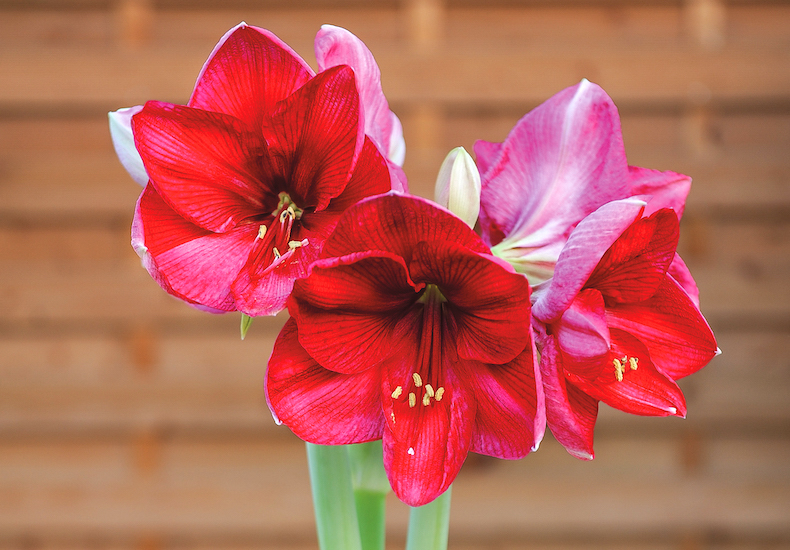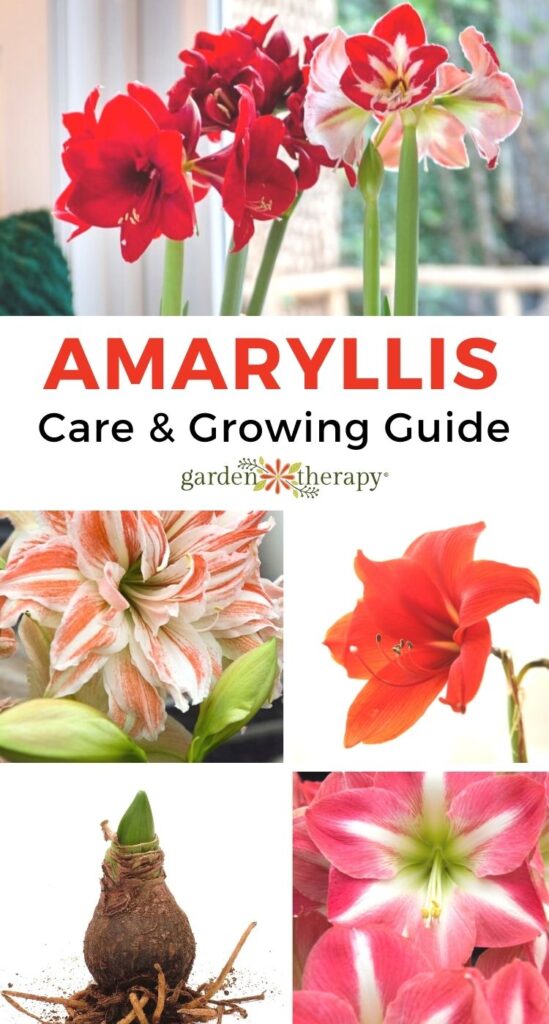The Bold Beauty of Amaryllis: A Guide to Cultivating and Appreciating This Striking Flower

The Amaryllis, with its towering stalks and flamboyant blooms, is a sight to behold. More than just a festive flower, often associated with the holiday season, it’s a symbol of pride, determination, and radiating beauty. While often mistaken for lilies, Amaryllis belongs to the Hippeastrum genus, a distinction that underscores its unique characteristics and cultivation needs. This article delves into the fascinating world of Amaryllis, exploring its origins, varieties, cultivation techniques, and the enduring appeal that makes it a beloved plant for gardeners and flower enthusiasts alike.
A History Rooted in South America:
The Amaryllis, as we know it today, has a complex and somewhat confusing history. The name "Amaryllis" was originally given to a different South African flower, Amaryllis belladonna, also known as the Belladonna Lily. However, the plants we commonly call Amaryllis actually belong to the Hippeastrum genus, native to South America, particularly Brazil, Peru, and Argentina. This misnomer persists due to the similar appearance and growing habits of the two plants.
The Hippeastrum genus was first classified in the early 19th century, and since then, extensive hybridization has resulted in the vast array of cultivars available today. These hybrids have been bred for larger flowers, vibrant colors, and improved resistance to diseases.
A Kaleidoscope of Colors and Forms: Exploring Amaryllis Varieties:
The beauty of Amaryllis lies not only in its size but also in its incredible diversity. Breeders have created a stunning range of colors, patterns, and flower forms, making it easy to find an Amaryllis that suits any taste. Some popular categories include:
Single-Flowered Hybrids: These are the most common and widely available Amaryllis. They typically produce four to six large, trumpet-shaped flowers per stalk. Colors range from classic reds and whites to shades of pink, orange, and even bi-colors. Popular varieties include ‘Red Lion’ (deep red), ‘White Christmas’ (pure white), and ‘Ambiance’ (pink with white stripes).
Double-Flowered Hybrids: As the name suggests, these Amaryllis produce double blooms, meaning they have more petals than single-flowered varieties. This creates a fuller, more opulent appearance. Examples include ‘Aphrodite’ (double pink), ‘Dancing Queen’ (red and white striped), and ‘Elvas’ (double white).
Miniature Amaryllis: These smaller cultivars are perfect for those with limited space. They produce smaller flowers on shorter stalks, making them ideal for growing in pots on windowsills or tables. Popular miniature varieties include ‘Papilio’ (green and maroon striped) and ‘Rio Negro’ (deep burgundy).

Cyberspace Amaryllis: Characterized by their spidery, unusual flower shape, these Amaryllis offer a unique and modern aesthetic. The petals are long and narrow, giving the flower a delicate, almost ethereal appearance. ‘Evergreen’ (light green) and ‘Sumatra’ (burgundy with white stripes) are popular examples.

Trumpet Amaryllis: These varieties feature elongated, trumpet-shaped flowers with a distinct elegance. ‘Emerald Star’ (light green with white stripes) and ‘Picotee’ (white with red edges) are notable examples.

Cultivating the Bloom: A Step-by-Step Guide to Growing Amaryllis:
Growing Amaryllis is a rewarding experience, and with the right care, you can enjoy its magnificent blooms year after year. Here’s a comprehensive guide to cultivating these stunning flowers:
1. Choosing the Right Bulb:
- Size Matters: Select a large, firm bulb, as larger bulbs generally produce more flowers. Avoid bulbs that are soft, bruised, or show signs of mold.
- Roots: Check for healthy, dry roots.
- Source: Purchase your bulbs from a reputable garden center or online retailer.
2. Planting the Bulb:
- Potting Mix: Use a well-draining potting mix that is slightly acidic. A mix of peat moss, perlite, and vermiculite is ideal.
- Pot Size: Choose a pot that is only slightly larger than the bulb. A pot that is too large can lead to excessive moisture retention and root rot.
- Planting Depth: Plant the bulb with the top third exposed above the soil line.
- Watering: Water thoroughly after planting and then sparingly until growth appears. Overwatering can cause the bulb to rot.
3. Providing Optimal Growing Conditions:
- Light: Place the potted bulb in a bright, indirect light location. Once the flower stalk emerges, you can move it to a slightly less sunny spot to prolong the bloom time.
- Temperature: Maintain a temperature between 65-75°F (18-24°C).
- Watering: As the stalk grows, water regularly, allowing the top inch of soil to dry out between waterings. Avoid getting water on the bulb itself.
- Fertilizing: Once the flower stalk appears, fertilize every 2-3 weeks with a balanced liquid fertilizer diluted to half strength.
- Rotating: Rotate the pot regularly to ensure that the stalk grows straight and doesn’t lean towards the light.
4. Supporting the Stalk:
- Amaryllis stalks can become quite tall and heavy, especially when the flowers bloom. Use a stake to provide support and prevent the stalk from bending or breaking.
5. Enjoying the Blooms:
- Amaryllis flowers typically last for several weeks. To prolong the bloom time, keep the plant in a cool location and avoid direct sunlight.
- Once the flowers fade, cut the flower stalk back to about 2 inches above the bulb.
6. Preparing for Dormancy:
- After flowering, continue to water and fertilize the plant as usual, allowing the leaves to develop and replenish the bulb’s energy reserves.
- In late summer or early fall, gradually reduce watering and allow the leaves to yellow and die back.
- Once the leaves have completely dried, cut them off and move the pot to a cool, dark, and dry location for a dormancy period of at least 8-12 weeks.
- During dormancy, do not water or fertilize the bulb.
7. Reblooming the Amaryllis:
- After the dormancy period, bring the pot out of storage and repot the bulb in fresh potting mix.
- Water thoroughly and place the pot in a bright, indirect light location.
- Resume regular watering and fertilizing as described above.
- With proper care, your Amaryllis should rebloom within 6-8 weeks.
Troubleshooting Common Amaryllis Problems:
- Bulb Rot: This is usually caused by overwatering. Ensure the potting mix is well-draining and avoid getting water on the bulb itself.
- Stunted Growth: This can be caused by insufficient light or nutrients. Ensure the plant is getting adequate light and fertilize regularly during the growing season.
- Lack of Blooms: This can be caused by insufficient dormancy or improper care. Ensure the bulb has a sufficient dormancy period and is properly watered and fertilized during the growing season.
- Red Blotch (Stagonospora curtisii): This fungal disease causes red spots and lesions on the leaves and bulb. Remove affected leaves and treat the bulb with a fungicide.
Amaryllis FAQs:
Q: How long does it take for an Amaryllis bulb to bloom?
A: Typically, it takes 6-8 weeks from planting to bloom.
Q: Can I grow Amaryllis outdoors?
A: In warmer climates (zones 9-11), Amaryllis can be grown outdoors in the ground. In colder climates, it’s best to grow them in pots and bring them indoors during the winter.
Q: How often should I water my Amaryllis?
A: Water thoroughly after planting and then sparingly until growth appears. As the stalk grows, water regularly, allowing the top inch of soil to dry out between waterings.
Q: Do I need to fertilize my Amaryllis?
A: Yes, fertilize every 2-3 weeks with a balanced liquid fertilizer diluted to half strength once the flower stalk appears.
Q: Why isn’t my Amaryllis blooming?
A: Possible reasons include insufficient dormancy, improper care, or a bulb that is too small.
Q: Can I save the bulb after it blooms?
A: Yes, with proper care, you can save the bulb and rebloom it year after year.
Q: What do I do with the bulb after the flowers fade?
A: Cut the flower stalk back to about 2 inches above the bulb. Continue to water and fertilize the plant as usual, allowing the leaves to develop and replenish the bulb’s energy reserves. In late summer or early fall, gradually reduce watering and allow the leaves to yellow and die back.
Q: How do I store the bulb during dormancy?
A: Once the leaves have completely dried, cut them off and move the pot to a cool, dark, and dry location for a dormancy period of at least 8-12 weeks. Do not water or fertilize the bulb during dormancy.
Q: Are Amaryllis toxic to pets?
A: Yes, Amaryllis bulbs are toxic to pets if ingested. Keep them out of reach of dogs and cats.
Conclusion: A Timeless Beauty for Every Gardener:
The Amaryllis, with its vibrant colors, impressive size, and relative ease of cultivation, offers a rewarding gardening experience. From the classic red hybrids to the more exotic spider-like varieties, there’s an Amaryllis to suit every taste and style. By understanding its needs and providing proper care, you can enjoy the breathtaking beauty of these magnificent flowers for years to come. Whether you’re a seasoned gardener or a beginner, the Amaryllis is a plant that will undoubtedly bring joy and a touch of elegance to your home. Its bold beauty and resilience serve as a reminder of the enduring power and splendor of the natural world. Embrace the challenge, cultivate the bloom, and revel in the magnificent display of the Amaryllis.


